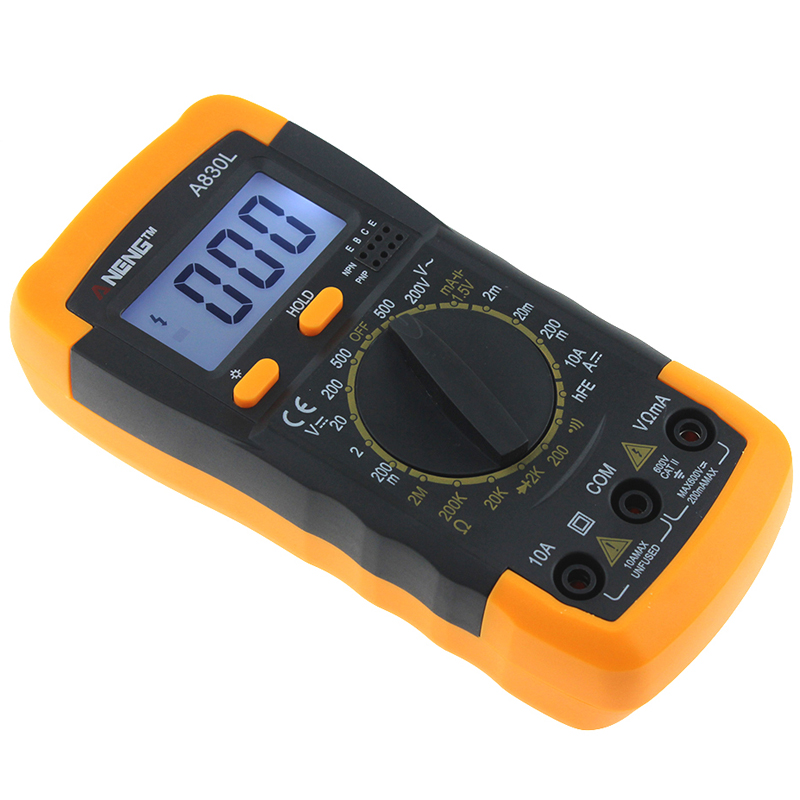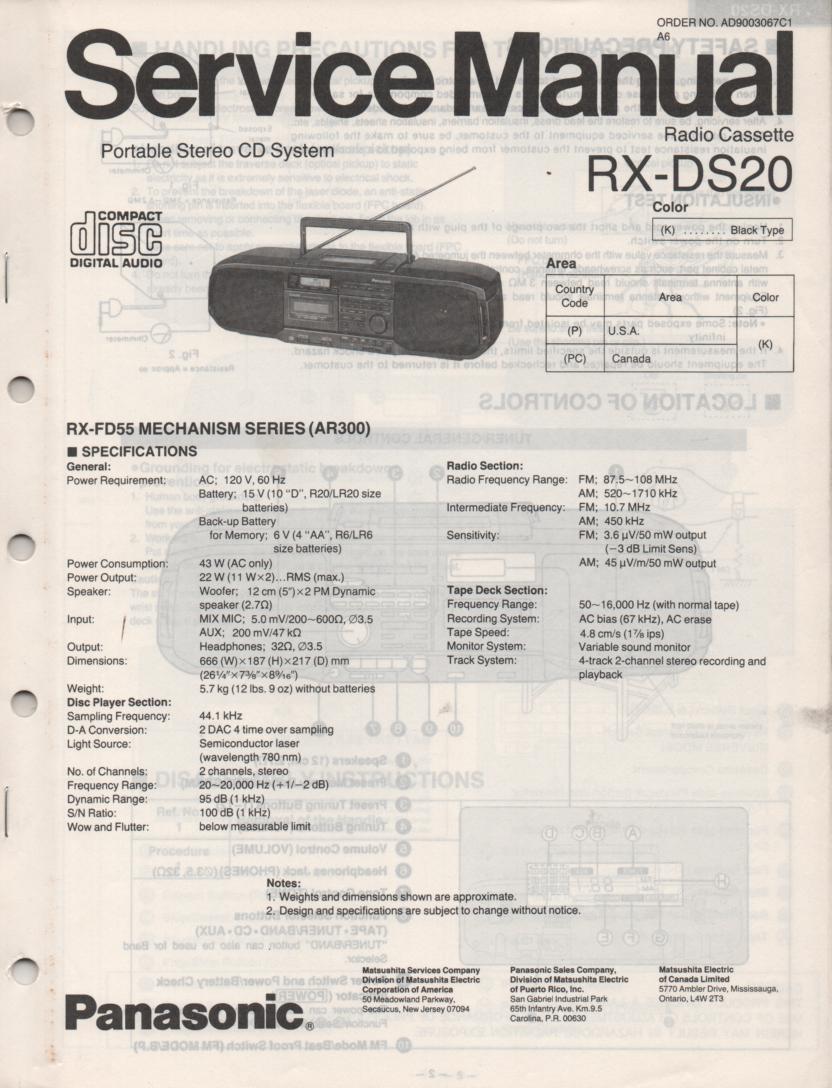Aneng Multimeter A830l User Manual Download
- Aneng Multimeter A830l User Manual Download 3600 Printer
- Aneng Multimeter A830l User Manual Download Free
- Aneng Multimeter A830l User Manual Download Pdf
- Aneng Multimeter A830l User Manual Download For Mac
- Jul 24, 2017 Quite predictable really but ANENG has another meter! It has three mA ranges (6mA, 60Ma, 600mA), it has uA, it has temperature, it has MIN/MAX, it has REL, it's True RMS, it does frequency up to 20Mhz (with duty cycle!), Ohms up to 60M, etc.
- Oct 02, 2018 Summary of Contents1 Fluke Multimeter User Manual2 Klein Multimeter User Manual3 Mastech Multimeter User Manual4 Craftsman Multimeter User Manual5 Amprobe AM-530 Multimeter User Manual6 Fieldpiece HS33 Multimeter User Manual7 Tacklife CM02A Multimeter User Manual8 UEi Test instruments DL369 Multimeter User Manual9 Extech EX330 Autoranging mini Multimeter User.
- Mar 13, 2017 As above joe did his torture tests on (a different branded version of) this meter. I think to summarise, calling it 20A seems a bit bogus, they should have just marked it 10A like the silkscreen and warning alarm intended:-/ It has some problems with frequency measurement, and a bug when switching from DC to AC.
The Aneng AN860B+ (aka Zotek VC17B+) is a larger meter - in fact it's nearly the size of the Fluke 87V - but that allows the space for separate sockets for current functions, and yes, it has a microamp range and a manual range switch. In addition, there are buttons for relative and max/min. Alibaba.com offers 109 digital multimeter a830l manual products. About 20% of these are multimeters, 2% are air conditioner parts, and 1% are clamps. A wide variety of digital multimeter a830l manual options are available to you, such as paid samples, free samples. ANENG AN302 Digital Multimeter 8000 Counts Manual Portable Testing RMS AC/DC Resistance Meter RMS Multi Meter Voltmeter Ohm Voltage Frequency Meter with LED Flashlight (Black): Amazon.com: Industrial & Scientific.
Important: before reading this review, please read this important safety information.
Overview
Having been seriously impressed with the Aneng AN8002, I wondered if there was anything out there that addressed the two minor problems with it - the lack of a manual range button, and the lack of microamps. Pretty quickly I discovered this meter.

The Aneng AN860B+ (aka Zotek VC17B+) is a larger meter - in fact it's nearly the size of the Fluke 87V - but that allows the space for separate sockets for current functions, and yes, it has a microamp range and a manual range switch. In addition, there are buttons for relative and max/min.
It's based on the same chipset, so comes with true RMS and is 6000-count. As such, we've already said a lot of what we need to say about this meter already during the Aneng AN8002 review, so please read that first if you haven't already.
As expected, it has 0.5% basic DC accuracy. It runs from a pair of AA batteries (not supplied).
It claims 600V CAT IV and 1000V CAT III, but naturally this must be taken with the usual pinch of salt. Theoretically, as it's a larger meter, there is more space inside for clearance, but in practice I would automatically restrict this meter to low-energy use only.
Unboxing
As with the AN8002, the packaging is just a plain white box. Inside is the meter, the probes, a thermocouple, and the manual. I was surprised to find the same probes as supplied with the AN8002 - while those feel right with that miniature meter, I did expect something a bit closer to normal size with this one. Still, they are reasonable quality, being pretty flexible. They claim CAT II 600V, or CAT II 1000V with the additional tip covers in place - so not CAT IV then! The current rating is 10A, despite the meter being able to do 20A on its current range.
The manual appears to be unfinished, and is missing several tables that should list the available ranges and their accuracy/resolution. I haven't yet located a PDF version, but various eBay listings give the accuracy figures, confirming that this is a 0.5%-class instrument.
This meter comes with a separate holster, which means it doesn't slide around on the bench. It feels solid and well put together. There is a tilting bail that hinges out from the back and works fairly well. The mode switch is a bit stiff but positive. There are six pushbuttons, which are the rubber membrane type.
Operation
Like the AN8002, this is a nice meter to drive. It has an additional Hz/duty cycle button, which means the yellow Select button doesn't need to cycle through those functions, making it quicker to change between DC and AC. The Range and Relative buttons are welcome additions, as is the Max/Min function. As always, the simple Hold button is of limited utility.
This LCD isn't as good as the AN8002 when it comes to viewing angles, and when lying flat on the bench, the unlit segments do start to appear. This is nowhere near as bad as the RS14, and certainly not a major complaint. The backlight is good, with the usual hotspot at the side. As expected, it only stays on for 15 seconds.
The best available resolution is 10µV, 0.1µA, 0.1Ω, 1pF, 1 degree, and 0.001Hz.
Like the AN8002, it's hi-Z in (about 20GΩ) when using mV mode, and there are 2 ranges - 60mV and 600mV. It has the same deliberate ±50µV 'dead spot' around 0V.
As for AC measurements, see my comments on the AN8002 review - in short, the -3dB point is 3kHz, and I have verified that it is true RMS.
Aneng Multimeter A830l User Manual Download 3600 Printer
And again, like the AN8002, the diode range gives around 3.2V when open circuit so will light LEDs, including blue and white ones. Continuity is latched and medium-quick. It works at 50Ω.
In common with the AN8002, the signal needs to cross 0V for the frequency function to work correctly. Checking the sensitivity, there are some differences with the AN8002. For a start, as there's no dedicated Hz position on the range switch, to get the best sensitivity you have to switch to mV, and press Select to put it into AC, and then press Hz/%. At low frequencies (<10kHz), it's about 5mV RMS. At 1MHz, it's roughly 10mV, which is excellent. However, I couldn't get it to go beyond 8MHz, whatever signal level I tried.
Trying the same on the AC voltage range, I needed 175mV at low frequencies (<10kHz). But 75kHz was the highest frequency it could measure, even at high signal levels. 50kHz required 2.3V RMS.
The manual doesn't carry the full specification for frequency, but does say that the frequency range is 'only suitable for low frequency and high voltage measurement'. So much as 75kHz might be fairly useful in practice, this meter does not reach the high frequencies that the AN8002 does. But at least it's pretty sensitive at low frequencies.
Picture Mode‰Picture ModeCinema ModeColor TempAspect RatioBacklightDNRCinema ModeOffConfirm Return Navigate CancelMENUOKBACK. 27MENU OPERATION (TV/AV mode)SETUPPressMENU0003EXWWRQ0003DQG0003WKH0003PDLQ0003PHQX0003ZLOO0003DSSHDU001100033UHVV000y0003buttons to select “SETUP”, and will display “SETUP” menu.3UHVV000z0003EXWWRQV0003WR0003VHOHFW0003WKH0003LWHP0003GHVLUHG00113UHVV000y0003EXWWRQV0003WR0003DGMXVW0003YDOXH0011PressBACK button to return to the previous menu.LanguageCoutry/RegionFull Search ( Digital TV only)As new services are broadcast, it will be necessary to re-tune the TV inorder to view them.Full Seach will completely re-tune the TV and can be used to updatedthe channel list. 
I checked the current consumption and found it was pretty similar to the AN8002 (not a surprise, really). It varied between 1.3mA and 2.5mA, and took 14mA with the continuity buzzer sounding. The backlight LED adds 4mA. As this meter uses AAs rather than AAAs, it should enjoy a longer battery life than the AN8002, all things being equal.
As it's fixed by the IC, it was no surprise to see the low-battery indication come on at the same 2.4V as the AN8002. The unit continues to give accurate readings until it switches off at 2.2V. In auto power-down mode, it draws just over a microamp, so no worries about leaving it in that state.
Teardown
Remove the holster, then the battery cover (single screw that fits in a brass insert), then 4 self-tapping screws:
Oh. That's underwhleming!
Aneng Multimeter A830l User Manual Download Free
First of all, glass fuses. That's not good - replace those with ceramic types as soon as you can! At least they are standard 20mm types. Hopefully the well-fitting case will contain the glass fragments should the worst happen.
Aneng Multimeter A830l User Manual Download Pdf
The input terminals are the same type as the smaller meter, but again, they are supported by the rear panel. Despite the extra size of the meter, standard-size probes sit proud of the front panel.
As with the AN8002, there is hardly any input protection - just the same PTC and a pair of transistors acting as a high speed clamp (Q3, Q4). Instead of a singe diode, there is a diode bridge for protection on the current ranges. The 10MΩ divider resistor is formed from a set of 7 1.5MΩ SMT resistors - not even MELF types. The only MELF resistors are the shunts are R22 and R24 for milliamps and microamps.
Note how the model type can be changed by installing resistors (R19 is hiding to the left of the 'top' battery terminal). The main difference between the VC17B+ and VC15B+ is the extra row of buttons for range changing, relative, and min/max mode (plus the deletion of the temperature function).
I haven't taken a picture of the underside of the PCB as that involves desoldering the backlight LED (look to the top of the picture, near to Q1). I doubt there's anything interesting to see under there!
Conclusions
Aneng Multimeter A830l User Manual Download For Mac
This meter works well, and is good value for money. But somehow, it just doesn't have quite the same appeal as the tiny AN8002. The AN860B+ is the size of a Fluke 87V, and as I already have the Fluke, that's what I use! But you like the idea of the improved feature set of the AN860B+ and don't mind the less capable frequency counter, then give it a go. But - needless to say, hopefully - disregard the 'optimistic' CAT ratings and keep it away from high energy situations!